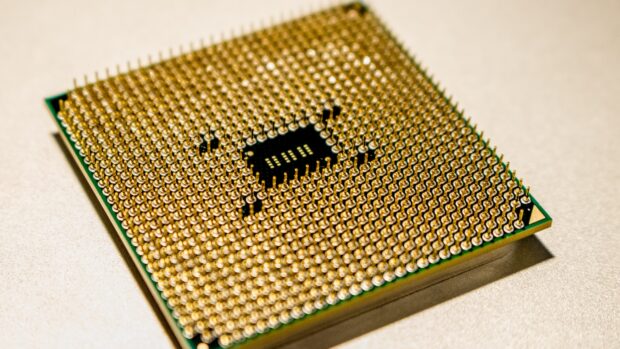Brain implants could one day help disabled persons speak again
Many studies bring us closer to a future where brain implants restore speech to those with disabilities. The most recent ones are from Stanford and the University of California. The former focused on a patient with amyotrophic lateral sclerosis (ALS); the latter worked on a person with severe paralysis. Both proved we are making significant progress in developing implants.
Putting a microchip into a human brain seems like a concept only meant for science fiction. Yet, we are getting closer to making that into our reality. While there are causes for concern, we should also see its healthcare potential. As a result, we could use our latest innovations to further improve human lives.
This article will discuss the two latest studies about brain implants. Later, I will cover Elon Musk’s similar project called Neuralink, as it is the most popular at the time of writing.
How advanced are modern brain implants?
Stanford and the University of California tried using brain implants to help disabled people speak. Both used different approaches but showed promising results.
The Verge says the Stanford research had an error rate of 9.1% for a 50-word vocabulary. Also, it reached 23.8% when expanded to a 125,000-word vocabulary.
After four months, Stanford’s implant algorithm could turn brain signals into words at roughly 68 words per minute. Conversely, the UC algorithm converted at a median rate of 78wpm.
It had an error rate of 8.2% for a 119-word vocabulary and 25% for a 1,024-word vocabulary. The Verge says a 23% to 25% error rate isn’t suitable for daily use, but it is a significant step up over existing methods.
You may also like: Notebooks engage brains more than gadgets
Edward Chang, University of San Francisco chair of neurological surgery, said the effective communication rate for existing tech is “laborious” at five to 15wpm. Meanwhile, natural speech runs at 150 to 250 wpm.
“Sixty to 70 wpm is a real milestone for our field in general because it’s coming from two different centers and two different approaches,” said Chang at a press briefing.
How did the studies work?
Stanford inserted electrodes into the brain of an ALS patient in two areas related to speech. Its brain-to-computer interface (BCI) detected brain activity when the patient tried to speak.
Then, an algorithm reads those signals to match them with phonemes, the building blocks of speech. The patient vocalized or silently mouthed sample sentences across 25 sessions lasting roughly four hours each.
You may also like: Scientists recreate song from brain waves
The UC Berkeley and San Francisco study placed a paper-thin sheet with 253 electrodes onto the brain of a person with severe paralysis from a brainstem stroke. Like the Stanford research, it made a patient train an algorithm by speaking.
However, Stanford translated those vocalizations into facial expressions and modulated speech on a digital avatar. Both studies were promising, but the experts admitted they needed more research.
“These are very early studies, and we don’t have a big database of data from other people. As we do more of these recordings and get more data, we should be able to transfer what the algorithms learn from other people to new people,” stated Frank Willett, a co-author of the Stanford study.
Can Neuralink revolutionize brain implants?
The FDA has approved Elon Musk’s brain chip company, Neuralink, to launch its first human clinical study. pic.twitter.com/MRBqsnni7v
— Pop Base (@PopBase) May 25, 2023
Elon Musk is arguably one of the world’s most famous billionaires, so it’s no surprise people know his Neuralink project. It might be the first thing you thought when you heard brain implant!
The tech mogul promised wild benefits from his brain chips, such as curing paralysis, blindness, and mental health disorders. Also, he shocked the world when he showed a monkey using the device.
In 2020, the monkey used its Neuralink chip to play Pong with its mind at Tesla’s Show and Tell event. Last year, the company showed the primate typing words on a screen.
The animal used its mind to move a cursor to select and input letters. He entered words and phrases like “type” and “welcome to show and tell.”
The demonstration showed the monkey charging its brain chip by sitting on a wireless charger. “I’m pretty sure you would not want an iPhone 1 in your head if an iPhone 14 were available.”
You may also like: Neuralink to create cyborg limbs
According to DW, one of the most outrageous promises of the Neuralink was mind reading. Despite the chip’s promise, experts quickly pointed out this feature is impossible.
ʺWe cannot read people’s minds, said Giacomo Valle, a neural engineer at the University of Chicago in the United States. “The amount of information we can decode from the brain is very limited,ʺ he added.
Juan Alvaro Gallego, a BCI researcher at Imperial College London, told DW, “The fundamental problem is that we don’t really know where or how thoughts are stored in the brain. We can’t read thoughts if we don’t understand the neuroscience behind them.”
Conclusion
Modern brain implants have shown they can convert thoughts into words faster than before. However, they need further research to have practical applications.
Other chip projects like Neuralink demonstrated impressive capabilities, such as controlling gadgets with the mind. However, experts still doubt many of its promised features.
Nevertheless, future brain chips could allow disabled people to regain lost senses like speech. Check out more digital tips and trends at Inquirer Tech.
